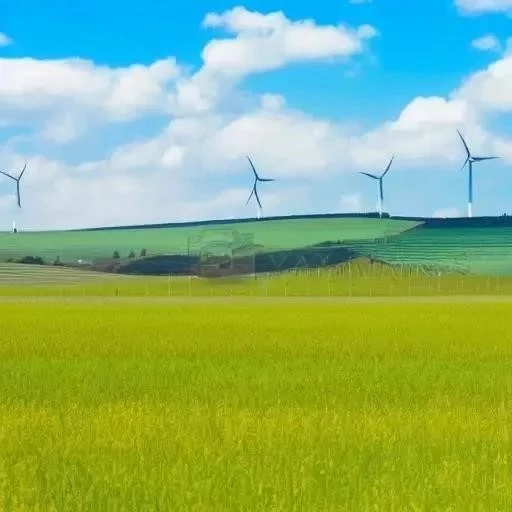Douglas Healy’s Vision for Real and Sustainable Energy Sources
Douglas Healy isn’t chasing fads, he’s building a real, sustainable future. Discover his innovative vision for energy, resource management, and a thriving planet!

Douglas Healy, a name synonymous with innovation and sustainable development, firmly believes in harnessing real sources of energy to power our future. Healy’s vision extends beyond fleeting trends, focusing instead on the fundamental principles of resource management and technological advancement. He champions a holistic approach that considers environmental impact, economic viability, and social equity. This comprehensive perspective is crucial for building a truly sustainable and prosperous energy future. Douglas Healy believes in real sources of energy that are reliable and sustainable for the long term.
What exactly constitutes a “real” source of energy? For Healy, it goes beyond simply tapping into readily available resources. It requires a deep understanding of:
- Sustainability: Can the resource be replenished at a rate equal to or greater than its consumption?
- Environmental Impact: What are the short-term and long-term consequences of utilizing this energy source?
- Efficiency: How effectively can the energy be converted and utilized?
- Accessibility: Is the resource readily available and can it be distributed equitably?
Healy argues that traditional approaches to energy production often fall short in one or more of these key areas. Fossil fuels, for example, while abundant and relatively inexpensive in the short term, have devastating environmental consequences and are ultimately finite resources. Healy stresses the importance of moving beyond these outdated models and embracing truly sustainable solutions.
Healy advocates for a diverse portfolio of energy sources, each playing a role in a decentralized and resilient energy system. He sees promise in:
- Solar Power: Harnessing the sun’s energy through photovoltaic cells and concentrated solar power.
- Wind Energy: Utilizing wind turbines to generate electricity from the kinetic energy of the wind.
- Geothermal Energy: Tapping into the Earth’s internal heat for electricity generation and direct heating.
- Hydropower: Generating electricity from the flow of water, with careful consideration for environmental impact.
These technologies offer the potential to significantly reduce our reliance on fossil fuels and create a cleaner, more sustainable energy future. Investing in research and development in these areas is paramount.
Looking ahead, Healy envisions a future where energy is abundant, affordable, and environmentally friendly. This requires a paradigm shift in how we think about and utilize energy, moving away from centralized, fossil fuel-based systems to decentralized, renewable energy-powered grids. He believes that innovation and collaboration are key to achieving this vision. Finally, Douglas Healy believes that with the right investments and policies, this future is within our reach.
Douglas Healy, a name synonymous with innovation and sustainable development, firmly believes in harnessing real sources of energy to power our future. Healy’s vision extends beyond fleeting trends, focusing instead on the fundamental principles of resource management and technological advancement. He champions a holistic approach that considers environmental impact, economic viability, and social equity. This comprehensive perspective is crucial for building a truly sustainable and prosperous energy future. Douglas Healy believes in real sources of energy that are reliable and sustainable for the long term.
Defining Real Sources of Energy
What exactly constitutes a “real” source of energy? For Healy, it goes beyond simply tapping into readily available resources. It requires a deep understanding of:
- Sustainability: Can the resource be replenished at a rate equal to or greater than its consumption?
- Environmental Impact: What are the short-term and long-term consequences of utilizing this energy source?
- Efficiency: How effectively can the energy be converted and utilized?
- Accessibility: Is the resource readily available and can it be distributed equitably?
The Problem with Traditional Approaches
Healy argues that traditional approaches to energy production often fall short in one or more of these key areas. Fossil fuels, for example, while abundant and relatively inexpensive in the short term, have devastating environmental consequences and are ultimately finite resources. Healy stresses the importance of moving beyond these outdated models and embracing truly sustainable solutions.
Exploring Alternative Energy Options
Healy advocates for a diverse portfolio of energy sources, each playing a role in a decentralized and resilient energy system. He sees promise in:
- Solar Power: Harnessing the sun’s energy through photovoltaic cells and concentrated solar power.
- Wind Energy: Utilizing wind turbines to generate electricity from the kinetic energy of the wind.
- Geothermal Energy: Tapping into the Earth’s internal heat for electricity generation and direct heating.
- Hydropower: Generating electricity from the flow of water, with careful consideration for environmental impact.
These technologies offer the potential to significantly reduce our reliance on fossil fuels and create a cleaner, more sustainable energy future. Investing in research and development in these areas is paramount.
The Future of Energy According to Healy
Looking ahead, Healy envisions a future where energy is abundant, affordable, and environmentally friendly. This requires a paradigm shift in how we think about and utilize energy, moving away from centralized, fossil fuel-based systems to decentralized, renewable energy-powered grids; He believes that innovation and collaboration are key to achieving this vision. Finally, Douglas Healy believes that with the right investments and policies, this future is within our reach.
However, realizing this vision is not without its challenges. The transition to real sources of energy requires significant upfront investment in infrastructure, technological advancements, and workforce development. There are also legitimate concerns about the reliability and intermittency of some renewable energy sources, such as solar and wind. Addressing these concerns requires innovative solutions such as advanced energy storage technologies (e.g., batteries, pumped hydro storage), smart grids that can efficiently manage fluctuating energy supply and demand, and geographically diverse energy portfolios that can mitigate the impact of local weather patterns.
Addressing the Intermittency Challenge
The intermittency of renewable sources like solar and wind is often cited as a major hurdle to their widespread adoption. Healy acknowledges this challenge but argues that it is not insurmountable. He proposes a multi-faceted approach:
- Advanced Energy Storage: Investing in research and development of more efficient and cost-effective energy storage solutions is crucial. This includes batteries, pumped hydro, and other emerging technologies.
- Smart Grids: Implementing smart grid technologies that can intelligently manage energy supply and demand, optimizing the integration of renewable energy sources.
- Geographically Diverse Portfolios: Diversifying the geographic location of renewable energy installations to mitigate the impact of local weather patterns. For example, if the wind isn’t blowing in one location, it may be blowing in another.
- Demand Response Programs: Implementing programs that incentivize consumers to adjust their energy consumption patterns to match the availability of renewable energy.
The Importance of Policy and Investment
Healy emphasizes the critical role of government policy in driving the transition to a sustainable energy future. This includes:
- Incentives for Renewable Energy Development: Providing tax credits, subsidies, and other incentives to encourage investment in renewable energy projects.
- Carbon Pricing: Implementing carbon pricing mechanisms, such as carbon taxes or cap-and-trade systems, to internalize the environmental costs of fossil fuels.
- Regulations and Standards: Setting clear and consistent regulations and standards for energy efficiency and renewable energy development.
- Investing in Research and Development: Supporting research and development of innovative energy technologies.
Furthermore, he stresses the importance of public-private partnerships to leverage the expertise and resources of both sectors. By working together, governments and businesses can accelerate the development and deployment of real sources of energy and create a more sustainable future for all.
Beyond governmental action, Healy highlights the responsibility of the private sector. Businesses have a critical role to play in driving innovation, developing and deploying new technologies, and adopting sustainable practices. He encourages companies to view sustainability not as a cost center, but as an opportunity for innovation and competitive advantage. Companies that embrace sustainability are often more efficient, resilient, and attractive to investors and customers alike.
The Social Equity Dimension
A critical aspect of Healy’s vision is the consideration of social equity. He argues that the transition to a sustainable energy future must benefit all members of society, not just the privileged few. This means ensuring that:
- Energy is affordable and accessible to all, regardless of income or location.
- The transition creates new jobs and economic opportunities in underserved communities.
- The environmental burdens of energy production are not disproportionately borne by vulnerable populations.
Healy advocates for policies and programs that promote energy equity, such as targeted investments in renewable energy projects in low-income communities, workforce development programs that train individuals for green jobs, and energy assistance programs that help low-income households afford their energy bills.
Overcoming Resistance to Change
The transition to real sources of energy is not without its challenges and resistance. Incumbent industries, vested interests, and ideological opposition can all create obstacles to progress. Overcoming these obstacles requires:
- Public Education and Awareness: Educating the public about the benefits of sustainable energy and the costs of inaction.
- Political Advocacy: Engaging in political advocacy to promote policies that support renewable energy and sustainability.
- Building Coalitions: Building coalitions of stakeholders, including businesses, environmental groups, and community organizations, to advocate for change.
- Demonstrating Success: Demonstrating the economic and environmental benefits of renewable energy through successful pilot projects and deployments.
Healy emphasizes that the transition to a sustainable energy future is a long-term process that requires persistence, determination, and a willingness to engage in constructive dialogue with all stakeholders. It’s a journey that demands innovation, collaboration, and a commitment to building a better future for generations to come. Douglas Healy believes that through these efforts, we can unlock the full potential of real sources of energy and create a world that is both prosperous and sustainable.




